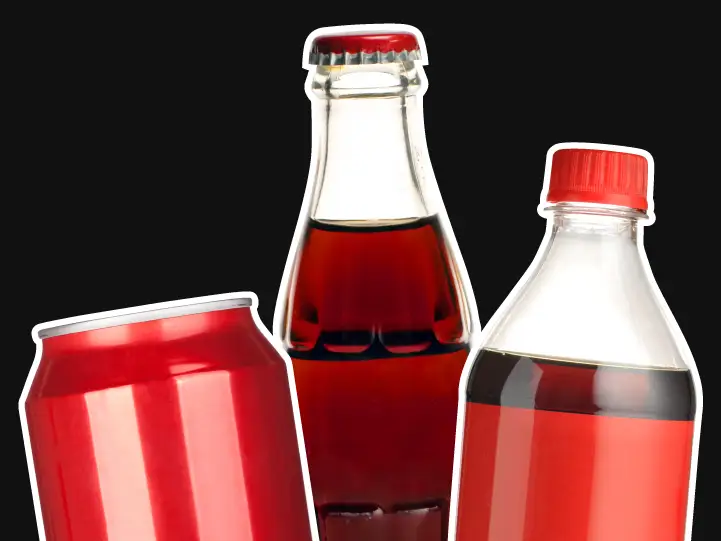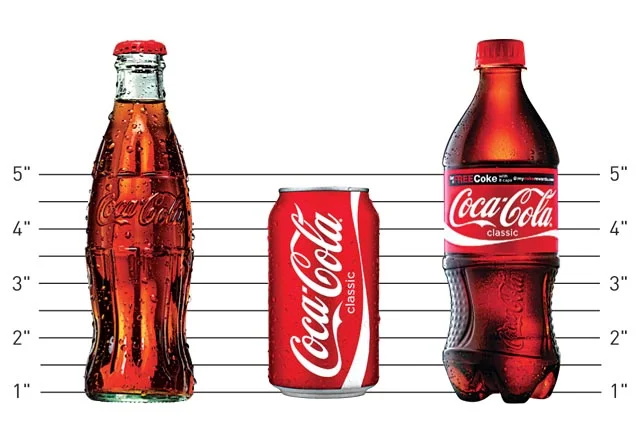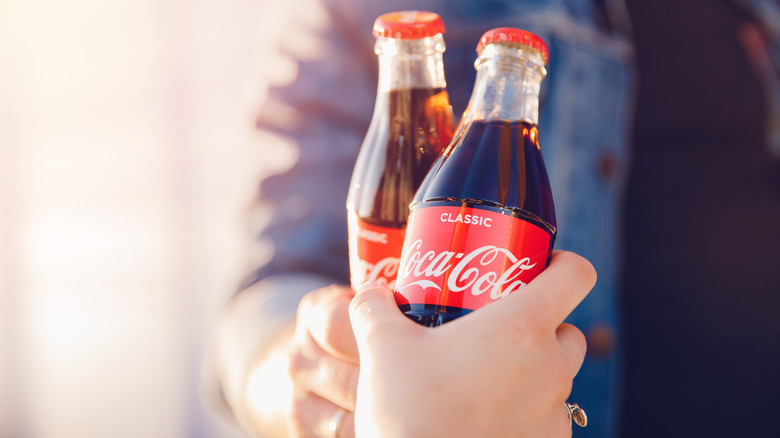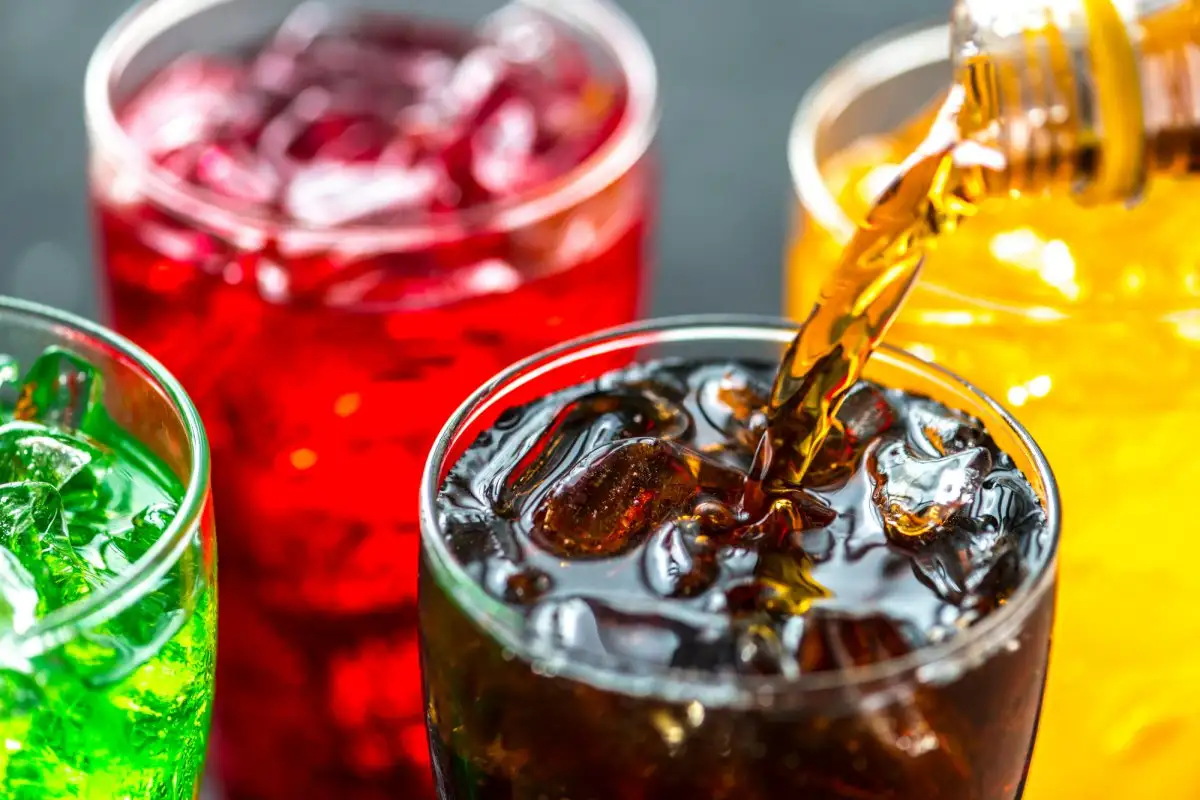Ever noticed how a cola from a frosty glass bottle just hits different? That crisp, clean fizz bursting with flavor feels noticeably brighter and more authentic compared to the same drink poured from a can or plastic bottle. It’s not mere nostalgia or clever marketing—there’s compelling science behind why sodas often taste superior in glass. From the material’s purity to temperature retention and even psychology, the humble glass bottle delivers a sensory experience that modern packaging struggles to match.

Table of Contents
Why Glass Keeps Your Soda Tasting Pure
Glass has a clear advantage over plastic and aluminum when it comes to preserving flavor purity. Unlike other materials, glass is completely inert – it doesn’t chemically interact with the soda inside it. This means no absorption of flavors or odors from the drink itself or the surrounding environment. The soda tastes exactly as intended by the manufacturer, maintaining its original profile over time without unwanted changes.
How Glass Protects Soda Flavor
While plastic bottles can transfer substances like acetaldehyde or phthalates into beverages – especially when warm or stored for months – glass remains chemically inactive. These chemical migrations often create subtle “off” flavors in plastic-packaged drinks. Aluminum cans aren’t immune either; their polymer linings can degrade, sometimes allowing metallic notes to seep into the soda. Glass introduces zero foreign tastes.
Another issue with plastic is its microscopic porosity. Tiny amounts of air gradually pass through plastic bottle walls, causing oxidation that throws off the soda’s delicate flavor balance. Glass forms a seamless barrier that prevents this entirely.
Flavor Retention: Data and Findings
Research shows sodas in plastic bottles lose carbonation up to three times faster than their glass-bottled counterparts. This fizz decline directly impacts mouthfeel and taste perception. Shelf life studies consistently reveal another benefit: glass-stored drinks maintain optimal flavor and carbonation for months longer than plastic or aluminum alternatives.
Blind taste tests confirm what many soda lovers swear – beverages from glass bottles consistently win preference ratings, particularly after storage. Brands like Coca-Cola, Pepsi, and craft root beers often receive comments about tasting “cleaner” or “more authentic” when served in glass.
A Scientific Perspective
Scientifically, glass’s impermeability makes it nature’s perfect packaging. It creates an absolute shield against oxygen, light, and heat – the three main enemies of flavor stability. Plastics, however, gradually break down when exposed to heat or UV light. Even at normal storage temperatures, this degradation can release compounds into the beverage.
Long-term storage or warm conditions accelerate these issues in plastic. Many consumers can actually detect the subtle chemical notes that emerge over time – a problem glass simply doesn’t have.
Key Takeaways
Glass bottles maintain soda purity by refusing to interact with their contents. The flavor you experience is precisely what the creators formulated.
Both plastic and aluminum packaging present chemical migration risks that intensify during extended storage or heat exposure. Glass’s non-porous nature also outperforms others in carbonation retention, delivering a consistently fresh sensory experience.
When all factors are weighed – from non-reactivity to barrier properties – taste panels and shelf-life data consistently validate that glass preserves soda’s intended flavor profile most faithfully.

Keeping Your Soda Fizzy
How well a soda holds its bubbles isn’t just about texture – it directly impacts flavor and that satisfying mouthfeel. Between packaging options, glass bottles consistently outperform both plastic bottles and aluminum cans in preserving carbonation over time.
Why Glass Reigns Supreme for Fizz
Glass acts like a fortress for carbonation. Its non-porous nature creates an almost perfect seal against gases, making it incredibly difficult for carbon dioxide (CO₂) – the magic behind soda’s sparkle – to escape. This lockdown keeps drinks lively and effervescent far longer.
Plastic bottles (typically PET) can’t match this barrier. They’re slightly permeable, allowing CO₂ to slowly leak out while letting air seep in. This double-whammy leads to noticeably flatter soda, sometimes in as little as 4-6 weeks. Aluminum cans land somewhere in the middle: better than plastic but still more porous than glass, especially if their seal isn’t flawless.
The Seal and Temperature Advantage
Two more factors give glass an edge. First, glass bottle caps – whether screw-top or swing-top – typically create a tighter, more reliable seal than plastic caps or can tabs, locking in precious fizz until opening. Second, glass handles temperature swings better than aluminum or thin plastic. Since warmth accelerates CO₂ loss, glass’s insulating properties help maintain cooler temperatures longer, indirectly protecting carbonation.
Try This Real-World Test
Curious about the difference? Take identical sodas packaged in glass, plastic, and aluminum. Store them unopened at room temperature for three months. You’ll likely discover:
The glass-bottled soda retains impressive fizz and freshness, tasting closest to its just-bottled state.
The canned soda shows noticeable carbonation loss but remains drinkable.
The plastic-bottled version becomes disappointingly flat, losing much of its appeal.
Data backs this up: glass maintains carbonation for many months, aluminum performs moderately well, while plastic often suffers significant fizz loss within weeks.
How Soda Companies Compensate
Interestingly, many manufacturers anticipate plastic’s shortcomings. They often over-carbonate sodas destined for plastic bottles at the factory, building in extra fizz to compensate for expected losses during distribution and storage. With glass, you get the carbonation level the creators intended, even months later.
The Final Fizz Verdict
For the boldest bubbles and truest carbonation experience, glass bottles deliver. They preserve that satisfying pop and sparkle better than plastic or aluminum, ensuring your soda tastes exactly as refreshing as intended – from the first sip to the last.
No Added Flavors from Packaging
There’s a reason soda often tastes better from a glass bottle: glass adds absolutely nothing to the flavor. Being chemically neutral, it neither releases substances into the drink nor absorbs flavors from it. This purity ensures the soda tastes exactly as intended. Plastic bottles, however, can transfer chemicals like acetaldehyde into beverages over time. Even aluminum cans – despite their metallic exterior – rely on plastic linings that may impart subtle flavor changes. For those seeking the truest expression of a soda’s original profile, glass remains the undisputed champion.
Why Glass Delivers Purer Taste
Glass’s non-reactive nature creates a blank canvas for flavors. Unlike plastics that can leach taste-altering compounds or aluminum linings that may absorb or release flavors, glass maintains complete integrity. Food scientists confirm this fundamental difference: while flavor migration issues are well-documented in plastic and aluminum packaging, no such contamination has ever been traced to glass.
Consumer preferences reinforce this. Blind taste tests consistently reveal people describe glass-bottled sodas as “cleaner” and “more authentic” – often attributing this to the absence of packaging-derived flavors. As packaging expert Sara Risch (founder of Science by Design) explains: “Glass introduces no chemicals that can leach into the liquid and affect flavor. That’s why it delivers the purest taste experience.”
Real-World Validation
Major beverage companies see this play out in their own testing. Coca-Cola’s taste panels frequently report that their soda tastes fresher and more original when served from glass versus plastic or cans. This pattern extends beyond soda too – beer, juice, and mineral water all show better-preserved flavors in glass according to both professional evaluations and consumer feedback. Beverage industry publications consistently document glass winning taste comparisons for its “clean” and “true-to-recipe” character.
The Science Behind the Taste
Chemical analysis confirms what taste buds detect. Studies consistently find measurable levels of flavor-tainting compounds like acetaldehyde in PET plastic-bottled sodas and bisphenol A in canned drinks – substances entirely absent in glass-bottled equivalents. Oxford experimental psychologist Charles Spence’s research further demonstrates how packaging materials influence perception, noting glass’s unique ability to deliver “sensory purity” by eliminating flavor interference.
The Flavor Finale
Glass’s chemical inertness creates a protective bubble around your beverage. It safeguards the drinker from unwanted flavor notes leaching from packaging while preventing the soda’s own flavors from being altered. The result is what experts and consumers alike describe as a “pure,” “original,” and “unaltered” taste experience – simply the beverage itself, uninterrupted by its container.

Our Senses and Mind: Why Soda in a Glass Bottle Tastes Better
That satisfying “ahh” moment with a glass-bottled soda isn’t just about the recipe – it’s a full sensory experience. Flavor isn’t created solely on your tongue; it’s a brain-powered collaboration between taste, smell, touch, sight, and even sound. The cool heft of glass in your palm, its classic silhouette against light, the distinctive clink when bottles touch – these details prime your brain for something special before you even take the first sip.
How Our Senses Shape Flavor
Professor Charles Spence’s groundbreaking experiments reveal how packaging manipulates perception. When he served identical strawberry mousse in white containers instead of black, participants reported it tasting 10% sweeter. Adding just 70g of weight to yogurt cups made people perceive the yogurt as 25% more filling. This sensory science explains why the same soda formula can taste fundamentally different based on its container – glass’s weight and temperature send powerful signals to our flavor-processing brain.
The Psychology of Materials and Memories
Glass bottles carry cultural baggage – we associate them with premium quality or nostalgic authenticity. This creates expectation bias: when we anticipate something tasting better, our brain often delivers that enhanced experience. Many report glass-bottled sodas tasting “colder” and “fresher,” even when served at identical temperatures to canned versions. A 2017 study confirmed this, with participants consistently rating drinks from glass higher than those from plastic or aluminum.
Color’s Flavor Illusions
Visual cues powerfully shape taste expectations. Red packaging subconsciously signals sweetness – Professor Spence found it makes drinks seem sweeter without added sugar. Coca-Cola famously demonstrated this when changing can colors triggered mass complaints about altered flavor, despite identical formulas. Glass bottles often leverage these psychological shortcuts through their transparent walls showing the liquid’s true color and bubble activity.
The Experience Amplifier
Where and how you drink matters immensely. That frosty glass bottle at a backyard barbecue, the satisfying hiss when opening it after mowing the lawn – these contextual details become part of the flavor. Spence’s research shows background music alone can make drinks taste creamier or more bitter. The total experience – sunshine, laughter, the bottle’s familiar shape in your hand – creates a multisensory tapestry that elevates the simple act of drinking soda.
Why Glass Wins the Mind Game
From Spence’s 10% sweetness boost to the 25% fullness illusion, science confirms: packaging profoundly shapes taste. Glass leverages nearly every sensory advantage – its temperature retention feels refreshingly cold, its weight signals quality, its transparency showcases the drink’s color. Add nostalgia and expectation bias, and you’ve got a powerful psychological recipe that makes objectively identical soda subjectively taste crisper, sweeter, and more refreshing. That’s not magic – it’s your brain celebrating the complete experience.

Final Sip: The Glass Bottle Advantage
So why does soda truly sing in a glass bottle? It’s a powerful combination of physics, chemistry, and psychology. Glass safeguards flavor purity by refusing to interact with your drink. It locks in carbonation longer than plastic or aluminum. Its weight and chill amplify refreshment, while nostalgia and sensory cues convince your brain it tastes better. Every clink, every bead of condensation, every glimpse of bubbles rising through its transparent walls transforms routine into ritual.
At TP Glass Bottle Manufacturer, we craft more than containers – we engineer sensory experiences. For over 30 years, we’ve partnered with beverage innovators to create bottles that preserve fizz, protect flavor, and elevate brands through science-backed design.

